Fort Mandan
July 2023 Fort Mandan Washburn, North Dakota #29-2023
SNAPSHOTSFIGURES
AL
7/14/2023
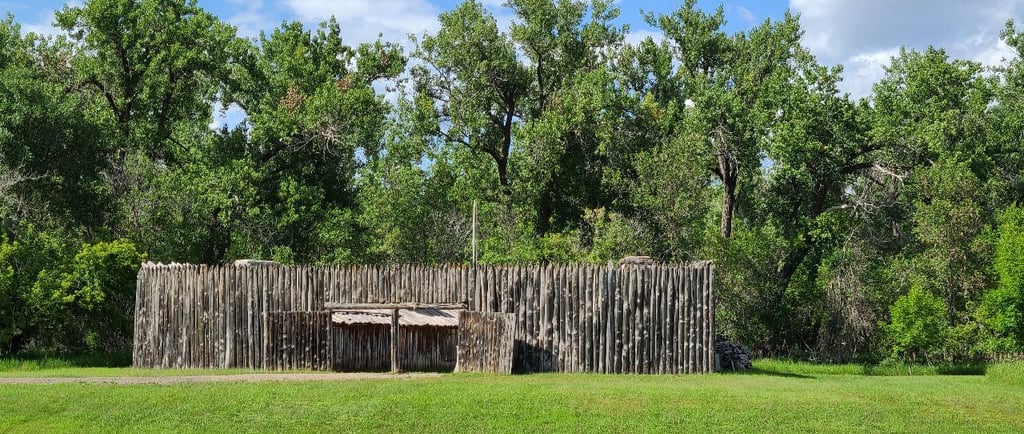

Winters are despicable! Growing up in northern Wisconsin, I can attest to that. While there are some niceties in winter, such as the frosty scenery, the brutal snow and frigid temps can bring extreme hardship.
That was the case for the Corps of Discovery Expedition, under the leadership of Meriwether Lewis and William Clark. In 1804 they were traveling westward navigating the Missouri River. By late October, they reached a Mandan village near the present day town of Washburn, North Dakota. With winter soon approaching, they came to an agreement with the natives for a location to build their shelter: a log fort made of cottonwood trees hewn along the river. And from the accounts of Clark, it sounded brutal. In his journal, Clark had written that it was 74 degrees below the freezing point on December 17th. That is 42 degrees below zero Fahrenheit. Way colder than I want to experience, even with all of the conveniences we have today, much less to be sustaining it in a simple log structure, but the Expedition prevailed.
While wintering in North Dakota, they were able to forge friendships with the Mandan and Hidatsa peoples. The goodwill and hospitality of these Indians sharing their corn, beans, squash and buffalo meat were big factors in the expedition surviving the winter, enabling them to complete their mission. In return, the members of the expedition traded their blacksmithing skills to create, repair and replace many native tools, such as knives, hoes and kettles. While I strive to be similarly generous and compassionate, I do find it most admirable when people can put aside their differences and help each other out. In fact, Fort Mandan was named in honor of the people that befriended the Expedition here.
Since the original fort burned in a fire, the fort that stands here today is a reconstruction, built according to the drawings and records of Lewis and Clark. It is generally triangular in shape with the gate side facing the river. There were tall pickets along the gate wall to help protect against hostilities. There were two store rooms at the back corner of the structure, living quarters down each side, with the blacksmith shop at the front corner near the gate. Overall, the fort is much smaller than it appears, but the space was utilized very efficiently and effectively. Among the fifty-some people that were living at the Fort were Toussaint Charbonneau, a French fur trader, and his Lemhi Shoshone wife, Sacagawea (Sakakawea/Sakajawea), who were recently recruited for the expedition as interpreters. She gave birth to their son while living at the fort.
I was pleased to see a statue of Seaman, the Newfoundland dog belonging to Lewis, who accompanied them on their journey, acting as a guard and retrieving game for the hunting parties. One day we will post of our two old-lady dogs whom are escorting us on this journey of our own. The cat will assure she’s included, too.
Learning the stories behind Fort Mandan and the perseverance of the people to not only survive a harsh winter, but also preparing samples and specimens to be sent to President Jefferson in Washington, and build relationships with the natives. Seeing people of vastly different beliefs and culture finding common ground and respect to help each other out makes me wonder how we lost that ability in today’s society, and wonder how to get it back. I can only think that when you put your mind to something, you can achieve it.
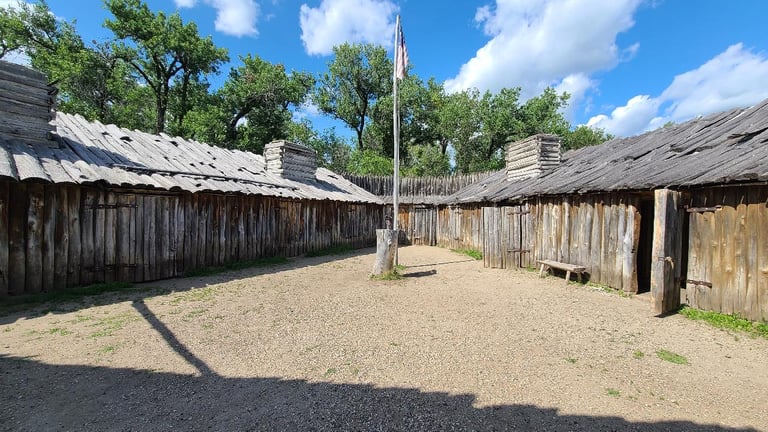


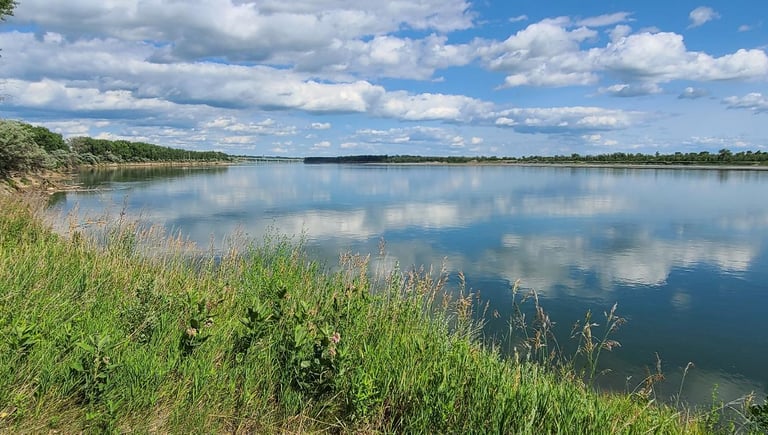
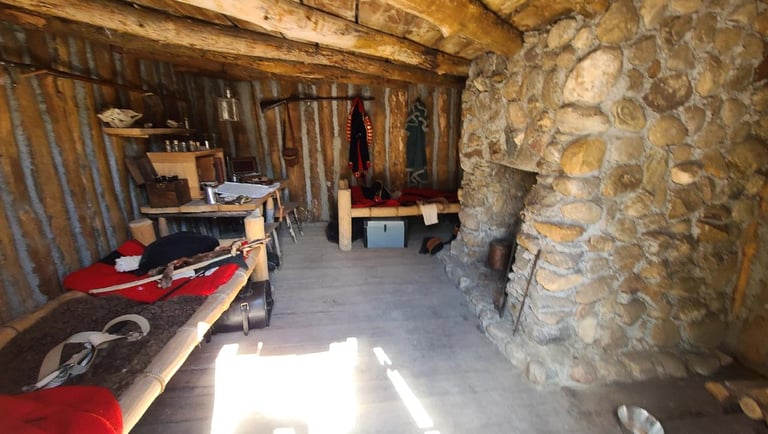



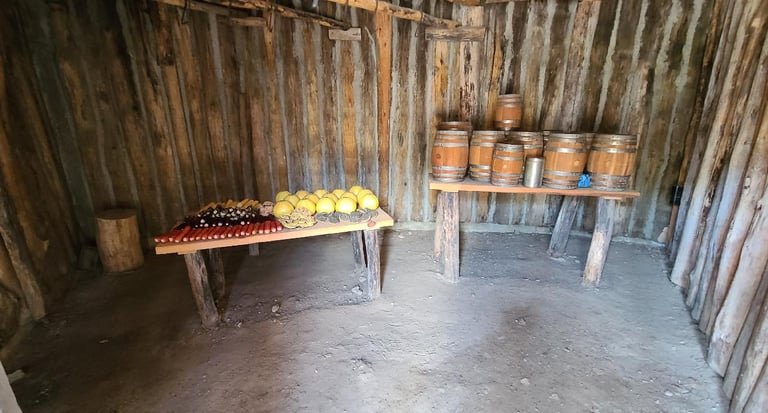


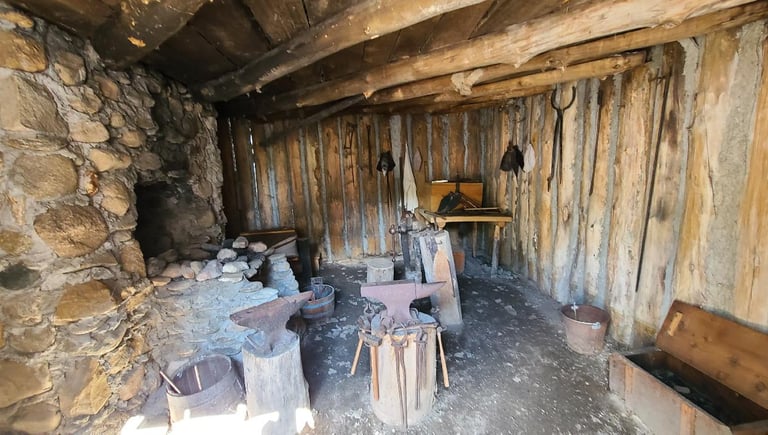

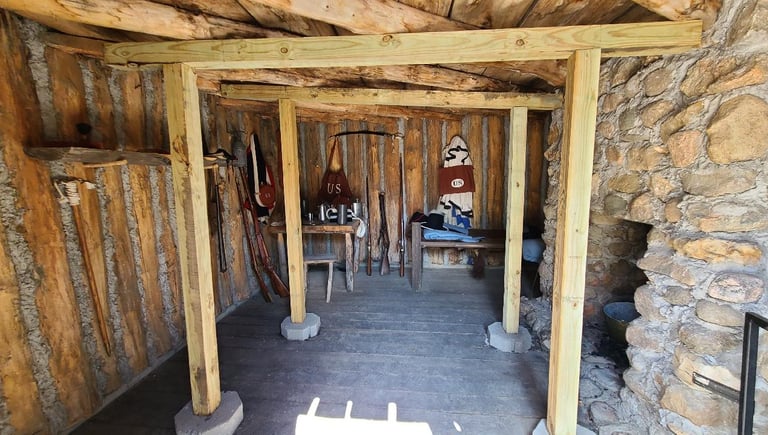
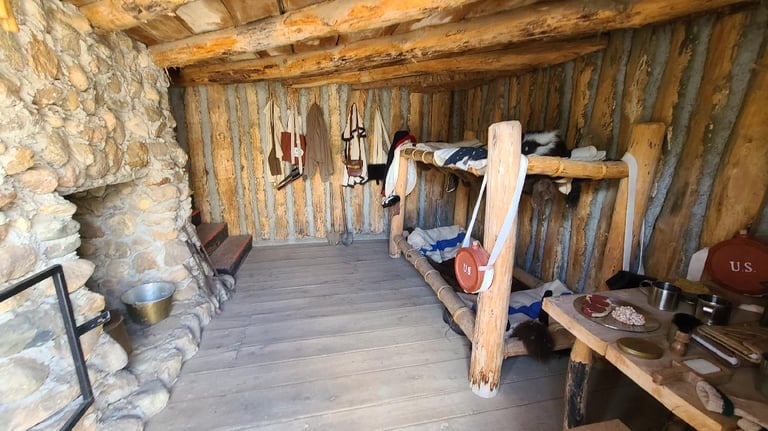

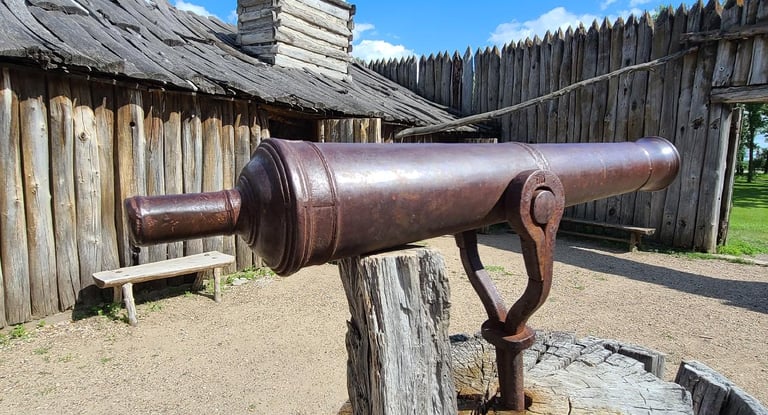

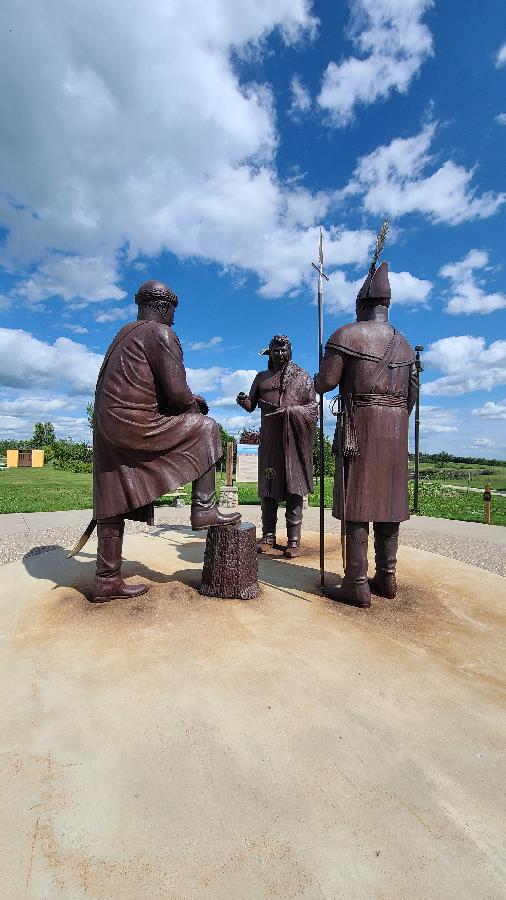

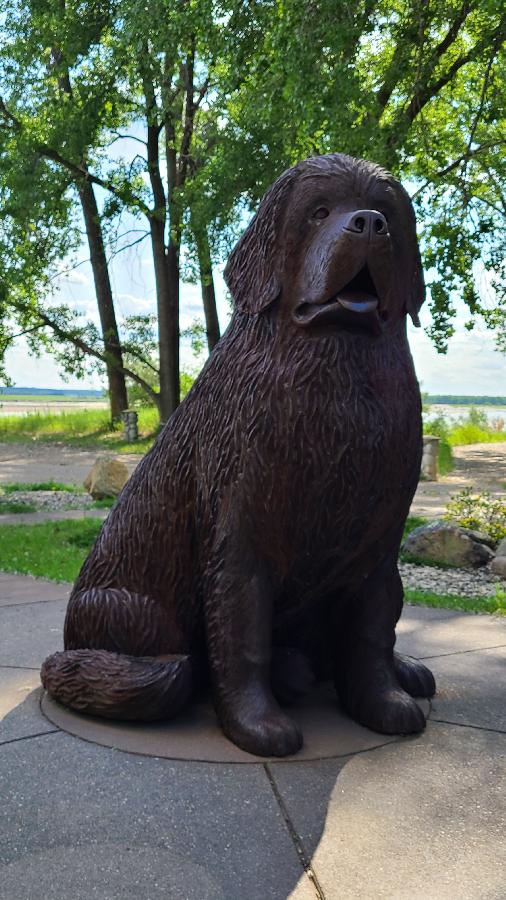

Meriwether Lewis, William Clark, and Mandan Chief Sheheke-shote
Charboneau and Sacagawea Quarters
Fort Courtyard
Missouri River
Blacksmith Shop
Storeroom
Lewis and Clark Quarters
Enlisted Men's Quarters
Sargent at Arm's Quarters
Defensive Weapon
Seaman
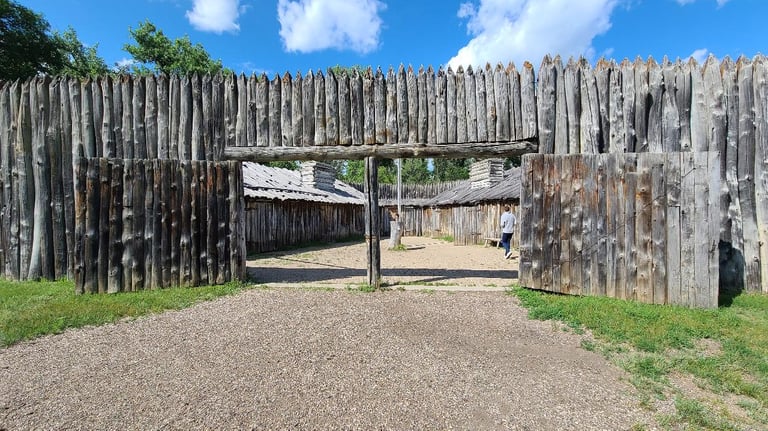

Front Gates
Share your comments on Facebook or email us at roadfronts@gmail.com
Subscribe for monthly updates
Current location:
